On a broad and shallow lake situated in the middle of a vast oil field north of the city of Surgut in northwestern Siberia, a Khanty (han-tee) fisherman poles his battered metal boat — an old Russian motorboat sans the motor — across placid, slate blue water. Save for a faint line along the horizon, it is difficult to differentiate between water and the mist laden sky above. The fisherman, a man in his late twenties named Vacia, is boating home to a small cabin on the lake’s far shore.
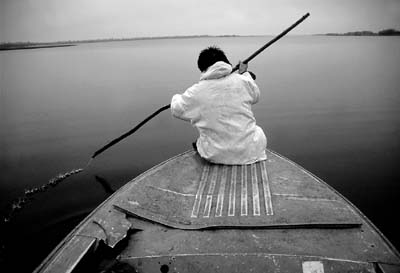
An anomaly in this part of Asiatic Russia, Vacia is trying to live the life that his father and his father’s father lived. Surprisingly unpolluted, Vacia’s lake still produces gunnysacks of fish. And the surrounding marshes still proffer a multitude of berries in early autumn. For Vacia, the bounty of this small parcel of land translates into a meager living. Not only does he harvest enough food upon which to survive but he is also able to sell sacks of fish and bucketfuls of berries to his neighbors: the cooks at a nearby oil company field camp and the workers themselves.
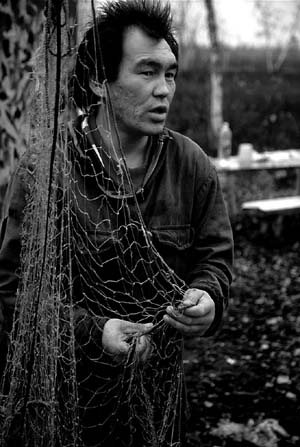
A decade prior, Vacia’s entire family lived upon the same land which he alone now occupies. Back then, each of the dozens of lakes in this area teamed with fish. Berries were plentiful throughout. Game, such as moose, bears, squirrels, waterfowl, forest game birds, and the like, was ubiquitous and the forest floor was rich with the lichen upon which small herds of reindeer thrived. Back then, Vacia had many Khanty neighbors, each living off the land in a fashion to which their people had grown accustomed.
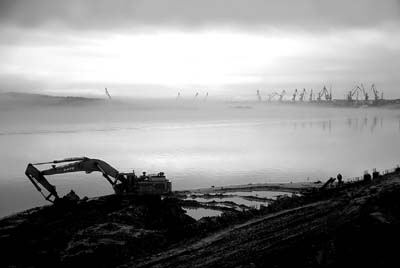
Today, this same region of lakes is now dotted with countless oil wells and laced with endless miles of raised, gravel roadbed. The numerous pipelines that crisscross the marshlands regularly leak, fowling waterways, lakes, and swamps in their paths. Gas burn-offs — standing pipes with hellish flames bellowing out the tops — reduce the surrounding ground to burnt mineral soil and occasionally draw winging ducks and geese to their death. Rusted machinery, tangled pipes, and abandoned vehicles litter meadows and marshes. Ghost forests of dead timber attest to nasty chemical spills and runaway fires. Given the breadth of this environmental havoc, it is a wonder that Vacia can still find a corner of land on which to subsist. It is equally unfathomable that he would be compelled to stay on. Nevertheless, Vacia is nothing if not resourceful. Not only does his livelihood depend on his neighbors’ wads of rubles but he occasionally eats at their dining hall a few kilometers down the road and he regularly catches a ride into Surgut on the company bus. Such is his life within the belly of the beast.
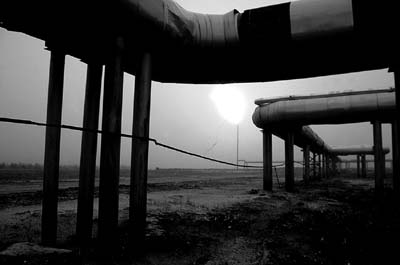
Sitting atop one of the largest petroleum reserves in the world, much of the Khanty homeland — principally the Khanty-Mansi Autonomous Okrug — has greatly suffered the ill effects of oil extraction. With the first well being drilled in 1965 along the shore of Lake Samatlor in the eastern portion of the Okrug, vast tracks of marsh and forest have succumbed to aggressive and ecologically unsound drilling practices. So widespread has the destruction been that entire river basins have become uninhabitable for the Khanty families who had lived within for numerous generations. Under Soviet rule these indigenous people were forcibly relocated, mostly to large cities such as Surgut or Nizhnevartovsk where cheap vodka easily fuels decisive spirals into alcoholism.

Following the Samatlor discovery in 1965, Russia’s interest in developing the Okrug’s petroleum reserves burgeoned, especially in the 1980s as the Soviet system began to crumble and the availability of cheap oil helped prop up the nation’s economy. After the collapse of the Soviet Union, things grew worse for the Khanty, especially after the Okrug’s oil reserves were privatized in 1993. Rather than belonging to a single government monopoly, the production fields were divided among several private companies. Given the heightened motivation to produce profits that privatization brought about, the development of these fields took on more of a slash and burn ethic. Leaking pipelines were not maintained and the technologies needed to extract as much of the oil as possible out of each well were passed up. As a result, because it is easier to open up new fields then it is to properly work existing ones, as much as 50% of the oil has been left untapped in many pre-existing wells.
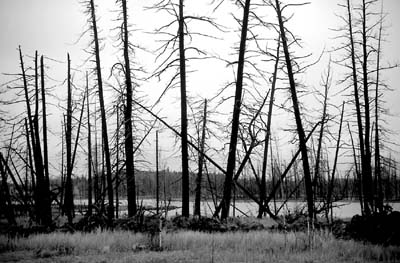
Following 1993, laws were passed that required the oil companies to obtain signed permission from local Khanty before drilling could begin. But the enforcement of such laws is weak and signatures are routinely obtained through coercion, bribery, false promises, and intimidation. When asked why he didn’t simply deny the oil company permission to drill, Vacia said that they would have done it anyway. For his leasing agreement Vacia receives 200 rubles a month; about $7.00 under today’s exchange rate.

Reflecting the flurry of drilling activity that has taken place in the Khanty-Mansi Autonomous Okrug over the past three and a half decades has been a dramatic shift in the region’s demographics. In 1969, the Okrug’s entire population stood at 289,000. Of that number roughly 20,000 were Khanty. Today, the number of Khanty has remained about the same but the Okrug’s entire population has risen to 1,312,000. Of that number 66% are ethnic Russian and 11% are of Ukrainian descent. Fewer than 2% are indigenous Khanty and Mansi. Of the Okrug’s two largest cities, Surgut, which was home to less than 10,000 prior to the oil boom, today has a population of 258,000. Nizhnevartovsk, which was non-existent prior to 1965, now boasts a population of 241,000. Approach either of these cities from their waterfronts along the Ob River and you will first be greeted by clusters of cargo cranes along the docks. Both cities feature Soviet-inspired high-rise apartment blocks, and both are laced with broad asphalt avenues often choked with traffic.
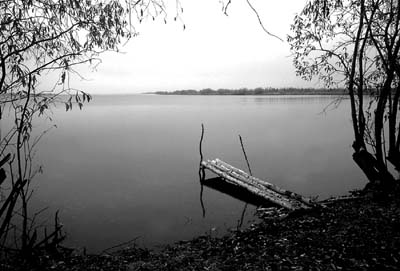
Currently, the Khanty-Mansi Autonomous Okrug accounts for 60% of all of Russia’s oil production. Considering the fact that Russia is second only to Saudi Arabia in oil exports, that is no small change. Thanks to recent rises in oil prices, Russia’s economic situation, along with its international standing, has been greatly fortified by its ability to produce oil. Such a scenario unequivocally translates into increasing pressure on Khanty lands. And, for persons such as Vacia — those Khanties who desire to follow the traditional, resource-based ways of their people — it means that life is likely to become even more uncertain.

©2002 Scott S. Warren
Scott S. Warren, a freelance photographer from Durango, Colorado, is examining Khanty life in Siberia.



